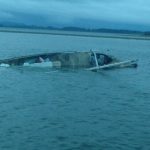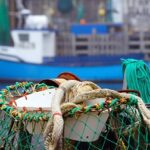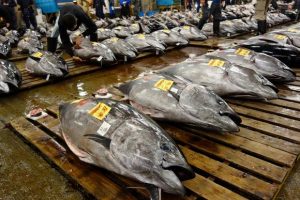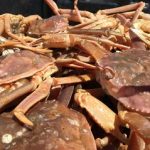Tag Archives: labor shortage
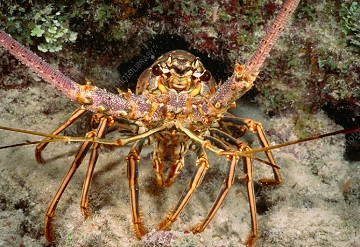
Florida Keys spiny lobster industry hit by housing crisis, labor shortage
Living where you work in Florida is a real problem for thousands of state residents, and it’s causing problems across industries. Harvesting spiny lobster, also known as the rock lobster, is bigger in the Keys than in most places, but folks can’t get crews to fully staff their boats. “Keys housing is too expensive for crew members to typically live, so they’re having to commute from places like Homestead, Florida, all the way out to the Keys. The fishermen really talked a lot about how important it is to have knowledgeable crew on these boats to make sure you’re avoiding citations.” A silver lining on the labor issue is that while older fishers are getting out of the fishery, experts are seeing more younger fishers coming in. >click to read< 14:20
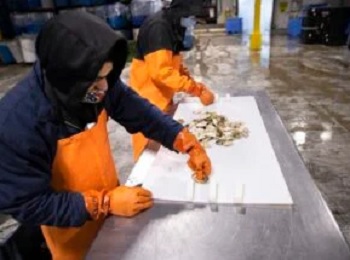
The End? Dwindling catch puts future of Portland Fish Exchange in jeopardy
The auction provides space on the Portland Fish Pier for fisherman to bring their haul and for seafood buyers to bid on the fresh catch. But it has struggled in recent years as fishermen are landing fewer fish. And they often take what they do catch to Massachusetts, which has robust seafood markets. The goal has been to support and maintain Portland’s fishing fleet, but a dwindling catch has made that more difficult and the auction struggles to fill its four times weekly sales of seafood. Rob Odlin, a fisherman who is president of the Portland Fish Exchange board, said fishermen are struggling and many are opting to take their catch to Massachusetts to sell to take advantage of more lucrative lobster sales. >click to read< 10:20
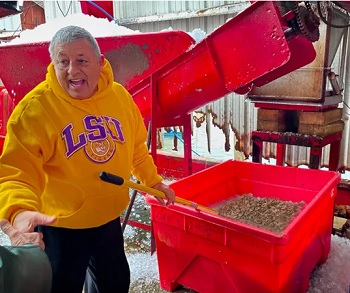
Grand Isle shrimp dock owner Dean Blanchard takes good with the bad after Hurricane Ida
The docks at Blanchard Seafood plant are about as close to the Gulf of Mexico as possible without getting wet. When Hurricane Ida struck the island, all that changed. The processing plant was not only inundated, but the winds tore away walls and ceilings, leaving owner and wholesaler Dean Blanchard with more than $1 million in damage. “It was Katrina-like damage,” Blanchard said. “There was less water damage but a hell of a lot of wind damage. We thought Katrina was a once-in-a-lifetime storm, but apparently it wasn’t.” At 63, Blanchard has seen his share of disasters impacting not only his seafood business but also the whole state. >click to read< 09:38
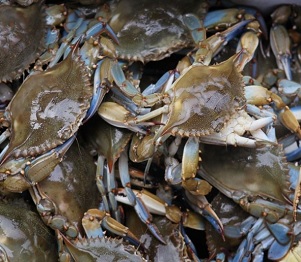
Maryland Crab Industry Says Labor Shortage Looms Again – Call for change to H2B Visa Program
Ask Jack Brooks, president of the Chesapeake Bay Seafood Industries Association, how the Maryland crab-picking season ahead looks right now, and he simply said, “Ugly.” The problem has nothing to do with the supply of crabs expected to be caught and processed in the crab houses of the Chesapeake Bay. The problem is labor. Every year, a total of 66,000 H-2B temporary work visas are up for grabs in a nationwide lottery. >click to read<
Hooper’s Island crab houses call for change to H2B Visa Program after 1 house out of 10 recieves workers – Phillips believes it’s not just the  crab houses that will close if this continues, the entire seafood infrastructure including watermen and wholesalers on Hooper’s island could be wiped out. “They could survive if there were one or two houses that miss out on visas but with nine out of ten [businesses] they are going to go out of business too,” he said. Video, >click to read< 12:37
crab houses that will close if this continues, the entire seafood infrastructure including watermen and wholesalers on Hooper’s island could be wiped out. “They could survive if there were one or two houses that miss out on visas but with nine out of ten [businesses] they are going to go out of business too,” he said. Video, >click to read< 12:37
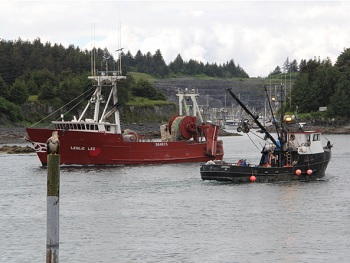
Alaska: Seafood industry facing challenges beyond harvest cuts
The Alaska seafood workforce, both on boats and on shore, is aging, and fewer young people are going into careers in the industry. While the graying of the fishing fleet is in part because of the high cost of entry for permits, boats, and equipment, there is also a looming shortage in processing plant workers. >click to read< 07:15

Gulf shrimp industry reeling from labor shortage
Nello Cassarino needs about 150 workers to dehead, peel, sort, package and freeze nearly 60,000 pounds of shrimp each day at his processing plant on Harborside Drive. And finding laborers is particularly difficult right now.,,, The industry has challenges from imported shrimp, but the labor shortage is the biggest issue commercial fishing faces, she said. Processing work typically pays about twice the minimum wage, which would be about $14 an hour, although it depends on the amount of shrimp being processed, Hance said. Pay for boat crews is more difficult to break down into an hourly amount because workers live aboard the boat for 30 to 45 days at a time. But workers may receive about $5,000 for a month at sea, depending on the catch, Hance said. >click to read<15:45
Some Alaska fisheries had a record-setting year for wild salmon. But no one wanted to gut all those fish
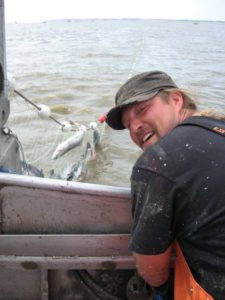 At the outset of the salmon season, fisherman Everett Thompson was looking forward to a banner year. The Alaska Department of Fish and Game had estimated that 41 million wild sockeye salmon would come to Bristol Bay, an eastern nook of the Bering Sea formed by the Alaskan Peninsula. Ultimately, 59 million salmon returned—the most since 1980—leading to record hauls in parts of the region, which contributes 40 percent of the world’s annual sockeye harvest. For a state that prides itself on sustainable salmon and ranks its seafood industry just below oil and gas, this should have been good news. As the annual migration reached its peak around July 4, Thompson and his deckhands were netting 15,000 pounds of salmon in six hours. Then he got an unexpected call from the plant manager. The message: Stop fishing. click here to read the story 09:28
At the outset of the salmon season, fisherman Everett Thompson was looking forward to a banner year. The Alaska Department of Fish and Game had estimated that 41 million wild sockeye salmon would come to Bristol Bay, an eastern nook of the Bering Sea formed by the Alaskan Peninsula. Ultimately, 59 million salmon returned—the most since 1980—leading to record hauls in parts of the region, which contributes 40 percent of the world’s annual sockeye harvest. For a state that prides itself on sustainable salmon and ranks its seafood industry just below oil and gas, this should have been good news. As the annual migration reached its peak around July 4, Thompson and his deckhands were netting 15,000 pounds of salmon in six hours. Then he got an unexpected call from the plant manager. The message: Stop fishing. click here to read the story 09:28


































